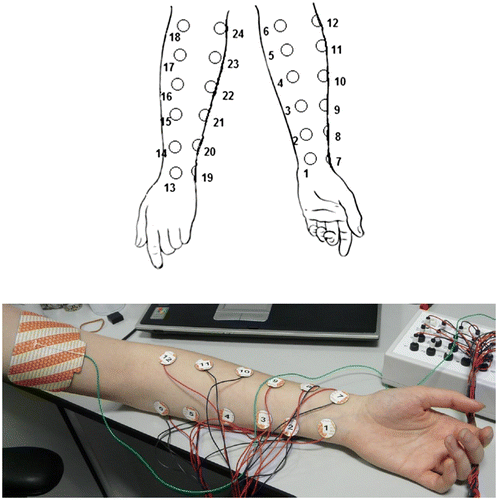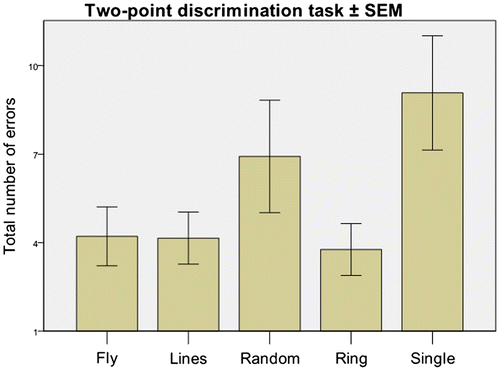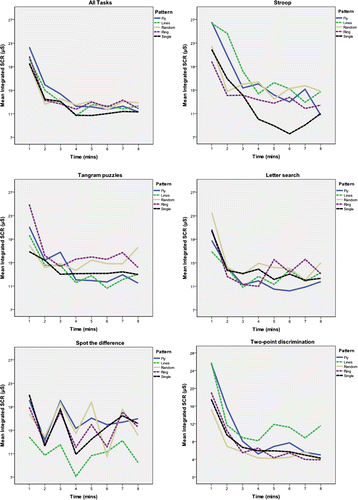Figures & data
Figure 1. Anatomical placement of cathode and anode electrodes.
Notes: Schematic showing placement of 24 cathode electrodes in four columns on the volar and dorsal surfaces of the left forearm. (Bottom) Photograph of placement of the 20-mm diameter (~3.14 cm2) cathodal electrodes 1–12 (Columns 1 and 2) on the volar surface of the left forearm. The large 51 × 102 mm (~52 cm2) rectangular anodal electrode can be seen between the body of the left biceps and triceps, as can the ShefStim breakout box (top right of photograph). During actual stimulation a cohesive bandage was wrapped around the forearm to secure the cathode electrodes in position.

Table 1. Mean “first felt” absolute and relative current intensities
Figure 2. Effect of TESS pattern on two-point discrimination scores.
Notes: Mean two point discrimination total errors stratified by TESS pattern. Error bars show +/−2 standard errors. A significant between-pattern difference in task performance was seen with the single electrode stimulation condition (electrode 1, ) resulting in an increased number of errors (p = 0.023 post hoc Fisher LSD test; multivariate ANOVA).

Figure 3. Mean integrated-SCR (μS) across eight, 1-min epochs, for all tasks, stratified by TESS pattern.
Notes: All tasks collapsed. (Top middle) Stroop. (Top right) Tangram puzzles. (Bottom left) letter search. (Bottom middle) spot the difference. (Bottom right) two-point discrimination. A significant main effect of time is seen during all TESS patterns and during all tasks (except during spot the difference, where a new set of picture-pairs was presented every two minutes). There was no significant between TESS pattern effect on integrated-SCR on any of the tasks.

